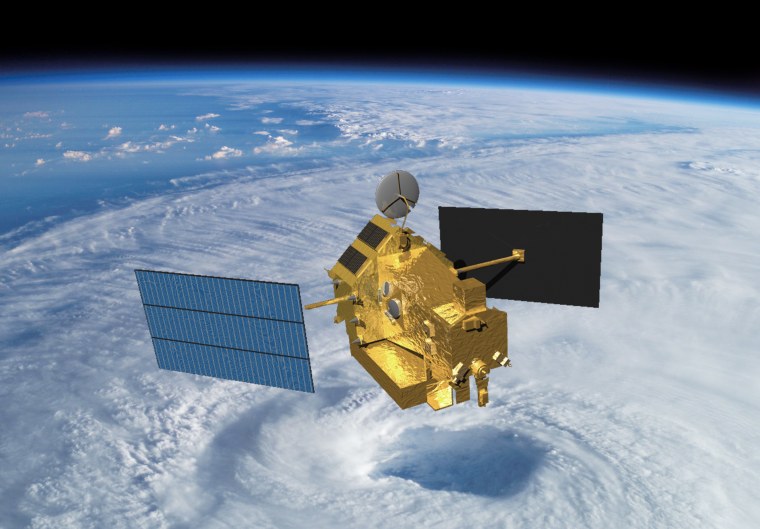A satellite built to track rainfall on Earth fell out of orbit and is thought to have burned up in the atmosphere over the South Indian Ocean, NASA said Tuesday.
The satellite — called the Tropical Rainfall Measuring Mission, or TRMM — was built by NASA and the Japan Aerospace Exploration Agency to measure the amount of rainfall on Earth for weather and climate research. TRMM re-entered the atmosphere over Earth's tropical regions at 2:54 a.m. ET Tuesday, according to a NASA update.
The re-entry time and location was based on readings from the U.S. Space Surveillance Network, which is operated by the Defense Department's Joint Space Operations Center. There were no immediate eyewitness accounts of the satellite's fiery fall, and no reports of damage or injury. [The 6 Biggest Spacecraft to Fall Uncontrolled from Space]
About 12 pieces of space debris from the nearly 3-ton satellite were expected to survive the plunge through Earth's atmosphere and reach the surface. The chance that any one of these pieces would strike someone was approximately 1 in 4,200, NASA's Orbital Debris Program Office said.
As its name suggests, TRMM's orbit brings it over the tropics between 35 degrees north and 35 degrees south latitude. The Earth-watching satellite was launched from Japan's Tanegashima spaceport in 1997 for a planned three-year mission. TRMM ultimately lasted about 17 years before it was shut down on April 15.
The surviving objects would have been made of titanium or stainless steel. Total mass of objects expected to survive equates to 247 pounds (112 kilograms) — roughly 4 percent of TRMM's total dry mass.
NASA says anyone who thinks they may have found pieces of the TRMM satellite should call their local authorities. "Although these materials are not toxic, they could have sharp edges and should not be touched or handled by private individuals," the space agency says in its list of frequently asked questions.
This is a condensed version of a report from Space.com, with updates from NBC News. Read the original report. Leonard David has been reporting on the space industry for more than five decades. He is former director of research for the National Commission on Space and is co-author of Buzz Aldrin's 2013 book "Mission to Mars: My Vision for Space Exploration," published by National Geographic. Follow Space.com on Twitter, Facebook and Google+.
